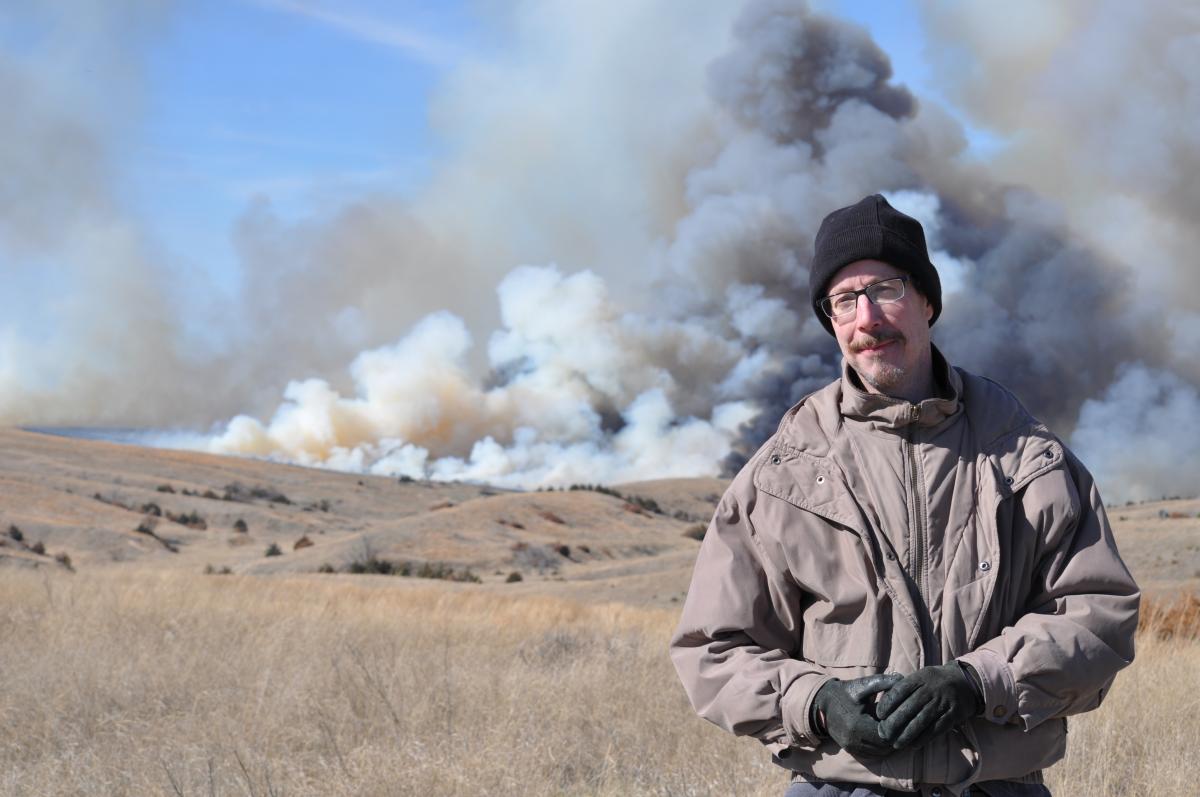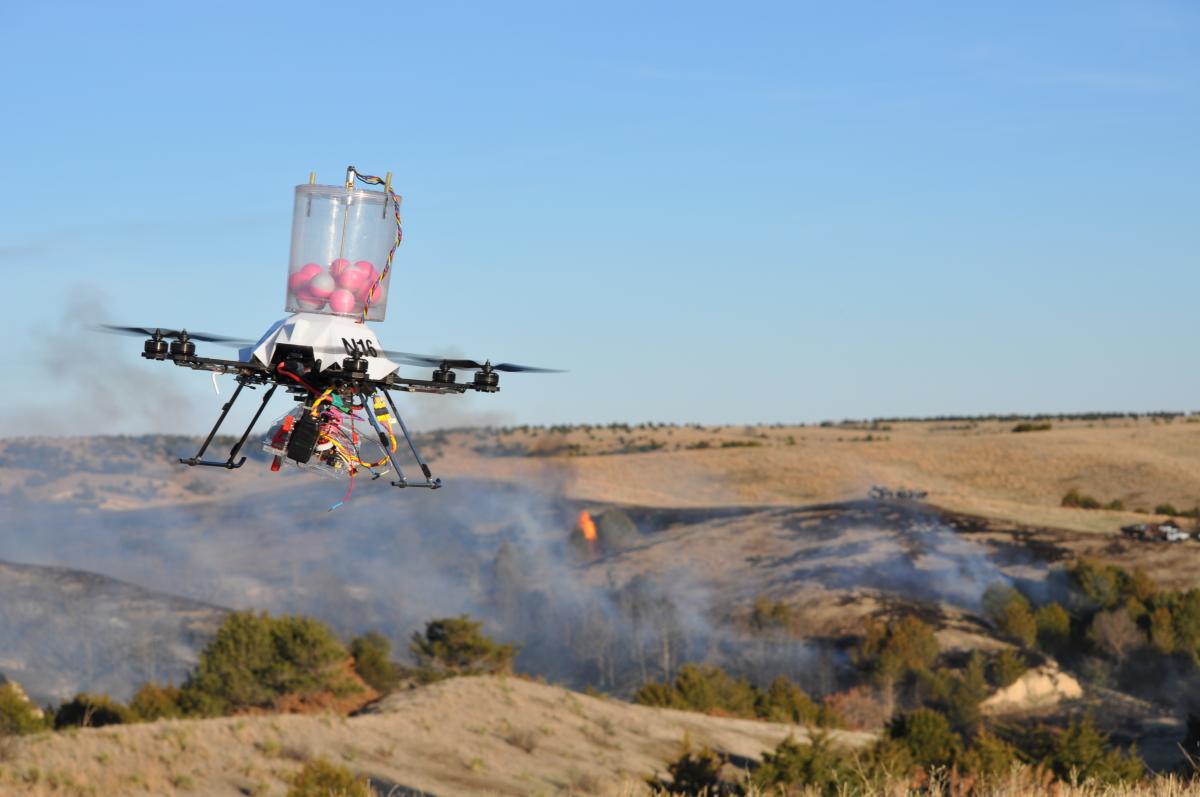
Craig Allen recently accomplished a personal first as an ecology professor by getting listed on a patent for a fireball-dropping drone.
“For me, because I expect that I will probably never have another patent in my life, because I do science that's generally not patentable and I really don't have the capacity for that kind of thing, the patent is fully unique and, thus, will have a special place in my heart,” said Allen, director of the National Science Foundation Research Traineeship at Nebraska.
He worked with agronomy professor Dirac Twidwell, computer science professors Sebastian Elbaum and Carrick Detweiler, and former Nebraska students Christian Laney, James Higgins and Evan Michael Beachly in developing IGNIS, the drone product.
“This concept of a drone that would drop fireballs came out of a series of conversations that primarily three of us were having—Sebastian, Dirac and I--because we were brought together because of the National Research Traineeship project and were talking about interdisciplinarity and combining a work and how novelty comes from work across disciplines,” Allen said.
At first, the three discussed using drones as a less dangerous way to sample invasive species like zebra mussels in Nebraska waters. Then, when a person was injured on an ATV during a prescribed burn, the three professors turned to discussing using drones in prescribed burns.
Allen said about 40,000 acres of rangeland in Nebraska are invaded by trees every year and fire is the best way to control that.
Typically, firefighters on ATVs or in helicopters carry out prescribed burns, but both methods can be dangerous.

“Burning is dangerous to people often because you’re on ATVs and rough topography, and we're in Nebraska. You know, it's relatively rough topography,” Allen said. “Imagine it in the Rocky Mountains, too, how hard it is to get somewhere and how fast flames go upslope in situations where it's easy to trap people. So, it really made sense to get some way to put fire on the ground that keeps people out of the equation.”
The drone product, IGNIS, consists of GPS navigation, an infrared camera and a hopper that can hold up to 400 ping-pong-sized balls filled with potassium permanganate.
The handler of a drone with IGNIS inputs the GPS pattern the drone will follow and decides when and where to drop the balls, called “Dragon Eggs.”
Once signaled to begin releasing its payload, IGNIS will lower a ball, inject it with antifreeze through a needle and drop it. The ball will start burning once it hits the ground.
IGNIS will drop one of these Dragon Eggs every two seconds, igniting 50-75 acres in a single payload. It can ignite several hundred acres in a day and fly at night and in heavy smoke.
Besides using IGNIS in prescribed burns, firefighters can use it to start fires that will meet wildfires, starving them of fuel. Allen noted this could prove particularly useful if a wildfire heads toward residential areas.

IGNIS costs about $45,000 and is sold only to firefighters, not the general public, according to Detweiler, CEO of Drone Amplified, the parent company of IGNIS.
“It is fairly straightforward and most of our customers are state or federal agencies,” Detweiler said.
IGNIS has been used in states such as Arizona, California, Colorado, Oregon and Texas, besides Nebraska.
“That is satisfying to know that this is actually being used out in the field to make a difference in fires and, hopefully, saving some lives,” Allen said.
He received an official acknowledgment that the patent had been awarded in October 2021 but not a lot of fanfare.
As the director of many projects and programs and the author of many books and articles, he noted the difference in public reception.
“Unfortunately, you know, nobody really notices a patent,” he said. “Nobody will know necessarily, and that’s fine, versus papers where people can look up and read and that's very satisfying, and you can see people using it.”
He had a plaque about the patent made for himself, placed it under his Christmas tree and unwrapped it as a way to celebrate the achievement.
“I never expected to have a patent being an ecologist,” he said. “So yeah, it's neat. It's sort of fun, a one-off thing. I plan to hang the plaque on my office wall.”
— Ronica Stromberg, NRT and EPSCoR Program Coordinator


